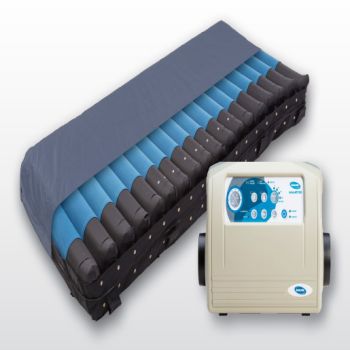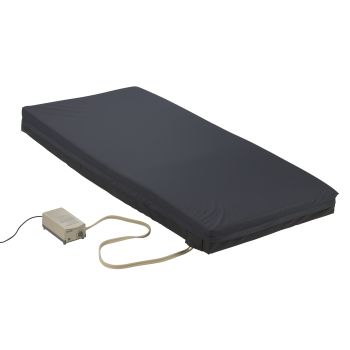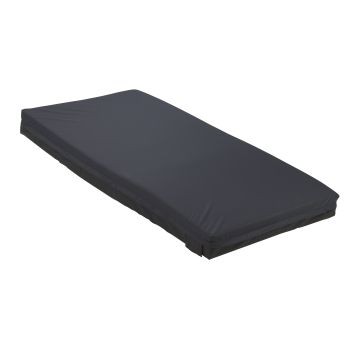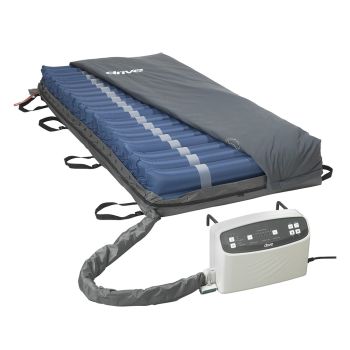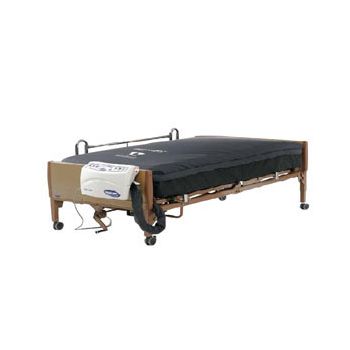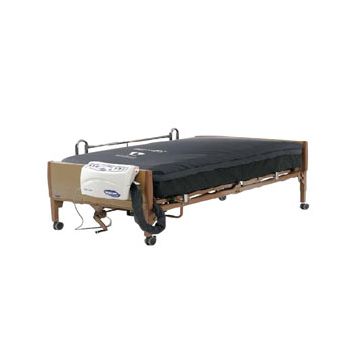Free shipping orders over $50
Twin Hospital Bed Mattress / Twin Size Hospital Bed Mattress
Most people can benefit from using a twin hospital bed mattress whether they’re purchasing it for home healthcare or for their medical facility. Twin and twin XL hospital bed mattresses are the most widely used mattress sizes throughout the world, offering a bedridden patient adequate room and comfort during their stay. AvaCare Medical has a large line of the best manufacturers’ twin size hospital bed mattresses in all of America, and we can ensure you get the right size that you need! Read More...
-
Balanced Aire Powered Alternating Pressure Air/Foam Mattress
Starting at $1,394.28 -
Inner Spring Mattress
Starting at $300.25 -
Solace Prevention 1080 Mattress
$349.05 -
Balanced Aire Non-Powered Self Adjusting Convertible Mattress
Starting at $1,255.79 -
Med Aire Plus Low Air Loss Mattress Replacement System
Starting at $1,236.37 -
Invacare Innerspring Mattress
Starting at $439.1 -
Solace Resolution Foam Mattress
$676.66 -
Solace Prevention Foam Mattress
$360.86
Types of Twin Hospital Bed Mattresses
Some people think that a hospital mattress is just as efficient as a regular mattress, but this just isn’t true. Hospital bed mattresses are designed differently from the everyday household mattress. While regular mattresses are meant for use when a person sleeps every day, hospital mattresses are designed to withstand a much heavier-duty load as well as heavy usage to accommodate numerous hours of a person sitting, laying, and sleeping on them. Therefore, a medical twin mattress proves to be a great option compared to a regular bed mattress for the elderly or those who are suffering from problems that require them to be completely bed-bound. Choosing an extra long twin mattress for a hospital bed isn’t always an easy task, and it’s even more important to choose a bed that is suited specifically for a patient or home user’s needs. Therefore, depending on the location of a bedridden patient and what their medical directives are (such as bed sore relief, joint and back relief, the need to turn them if fully disabled, etc.) one can find the right kind of hospital bed mattress that is twin sized. Common types of twin mattresses for medical use include:
Innerspring
An innerspring mattress is the most common type of hospital twin mattress used in hospitals. Hospital bed mattresses that are twin sized are frequently used in hospitals, nursing homes, and other medical facilities due to their low cost and extremely high quality. These mattresses can often withstand 250 lbs. to 350 lbs. of continuous pressure throughout, and they are built to handle long hours of heavy use. While innerspring twin mattresses may be used frequently in hospitals and can benefit patients at home due to the price, they may not be the most suitable option for those who live with long-term conditions that require more intensive pressure relief care.
Low Air Loss
Low air loss twin mattresses are an air mattress system designed to help those in need of moderate to intensive pressure sore relief. These mattresses are built with tiny pinholes which let air escape. This creates a condition in which the user is in-fact not sleeping directly on the mattress, but rather on a “blanket” of air. It gives the user a feeling of “floating” while they lie down, and helps to keep the patient cool and dry. The individual cells have pressure settings that can be adequately controlled in order to attain more firmness or softness as necessary to contour to a patient’s body. There are even some low air loss systems that can allow for alternating pressure controls as well.
Alternating Pressure
The alternating pressure strategy is similar to low air loss twin air mattresses for a hospital bed. However, one difference is that a regular alternating pressure mattress doesn’t have the pinholes for low air loss. These individual cells are programmed in order to constantly shift pressure back and forth on them so that a patient isn’t always having the same amount of pressure on the mattress – thus alleviating and preventing bedsores. Both low air loss and alternating systems are excellent solutions for bariatric patients or elderly users who live at a higher risk of developing bedsores.
Lateral Rotation
A twin sized lateral rotation mattress is a combination of an air mattress that leverages both alternating pressure and low air loss. However they also have controls by which it helps the patient “rotate” on regular intervals as needed. This eliminates the need to manually rotate and reposition a patient using other means (such as a hospital wedge). The mattresses are used mostly for patients who are paraplegic or for those who have a debilitating spinal or musculoskeletal condition such as muscular dystrophy, or ALS. They provide particular assistance to seniors who are completely bedridden and cannot move or be transferred.
Choosing a Twin Hospital Bed Mattress
All of the above-listed types of mattresses are designed to be used depending on the patient’s needs and they require caregivers to control them. This helps to ensure that patients, loved ones, or other parties don’t accidentally adjust the bed or mattress improperly, inviting possible harm to the patient or damage to the bed.
Depending on patient care needs, one needs to know how to choose the proper mattress designed for their hospital bed appropriately. Certain factors that need to be considered are:
How Long is the Patient Going to Need to be in Bed at a Given Time?
The longer a patient is going to need to be on the bed determines what kind of mattress would best suit the patient. If the patient is taller, they may need a twin xl hospital bed mattress. Yet depending on their body mass and how much they weigh, they may need to consider choosing a larger size mattress. Further, in the case of medical facilities, one may need to understand that the higher-priced air models may actually benefit patients better at home, so an innerspring mattress should be suitable for most hospital applications. Moreover, the weight capacity should be high to accommodate the different sizes and weights of multiple users.
Does the Patient Need Pressure Sore Relief?
If a person in their home bed needs relief, it may be beneficial to choose one of the air bed options. Decisions are often influenced by both the severity of the patient’s condition and the budget available. If a user needs only a little bit of pressure relief, one can always buy a foam mattress as well. It is important to know that alternating pressure, low air loss, and lateral rotation bed systems are higher in price depending on numerous factors as well (things like weight capacity, size, features, brand, and type affect these prices).
Do They Suffer from Conditions that will Make it Harder to Accommodate Transferring?
If a person suffers from debilitating conditions that will make it difficult to transfer them, they may need additional hardware installed to help them in and out of bed. Bariatric muscular dystrophy patients and others who are paralyzed may require the use of a sling or patient lift in order to provide some relief on their bodies and on the caregivers.
Can the Bedframe Handle the Weight of the Mattress Plus the User?
It is extremely important that the bed’s frame in use will be able to bear the weight of both the mattress and the patient. The air bed mattress systems often weigh more than an innerspring and foam mattress, so the bed frame needs to be able to hold the combined weight of the sleep surface, the user, and any accessories.
Will the Twin Size Medical Mattress Fit Properly On the Bed?
Twin size mattresses are approximately 36 inches wide and 80 inches long. Some smaller twin mattresses may even be 34-35.5 inches wide. The mattress must match the bed frame’s width to ensure the compatibility of the frame, the patient, and the mattress altogether.
Here at AvaCare Medical, we want you to be able to find the right twin hospital bed mattress to fit your needs and your budget! If you have any questions or would like some assistance with your order, our customer caregivers are here to answer your call weekdays during our business hours listed at the bottom of our website. All you have to do is call us toll-free at 1-877-813-7799 or send us an email anytime!



